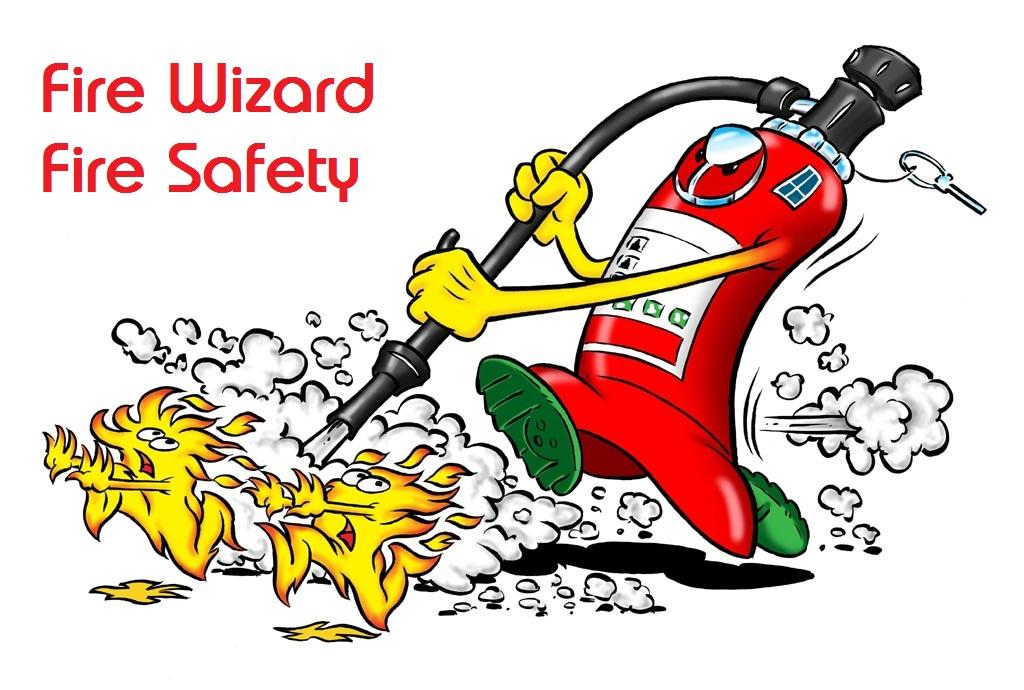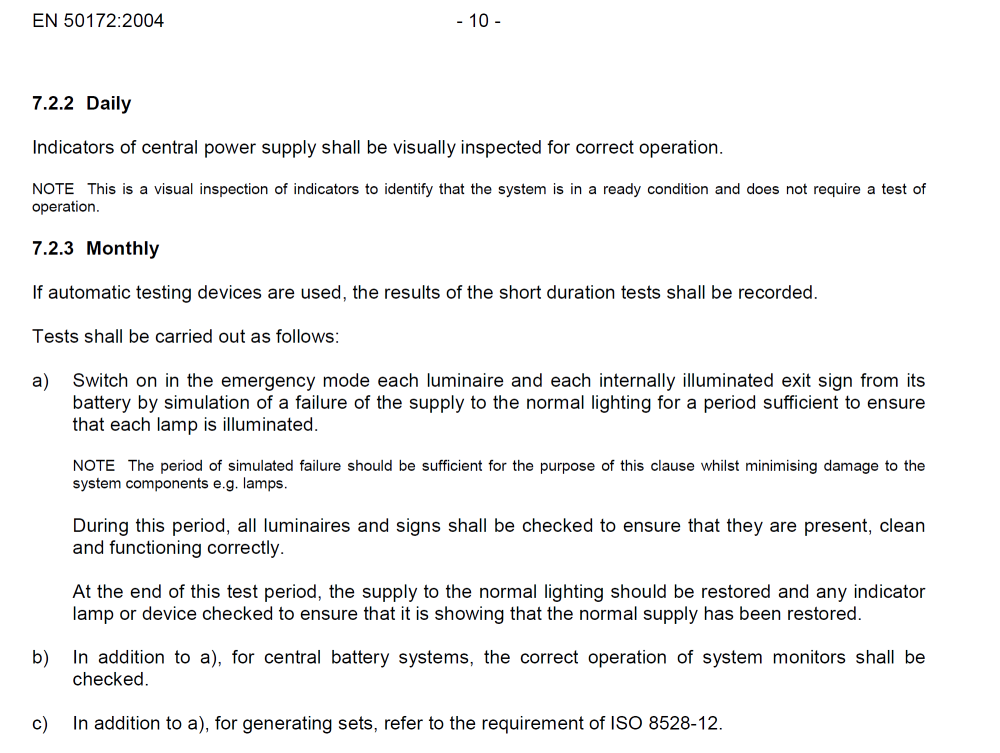-
Posts
2,704 -
Joined
-
Last visited
Everything posted by AnthonyB
-

Risk Assessment Query on Smoke ventilation in Blocks of Flats
AnthonyB replied to a topic in Fire Risk Assessments
Short section of ladder in SCBA is unlikely to happen, they could vent to some extent from the landing set, although strictly speaking the higher ones should be the ones used. It meets the spirit of the guidance so it's essentially how comfortable you feel with it in this situation. -
Looks like a pretty standard cladding & latent defect exclusion that virtually all standard fire risk assessors PI have. Cover for this is difficult to get and costs a capital amount of money which is why firms doing FRAEW reports charge an extortionate amount of money.
-
No, such requirements aren't retrospective if no relevant alterations have been carried out in recent times where they should have been added.
-
The minimum is to test one smoke/heat detector or call point per zone on a service visit, with all having been tested at least once in a 12 month period. The minimum is 2 service visits in a 12 month period so most of the time you see 50% of devices tested per visit, but as long as one per zone is tested you could do 10%/90%, 25%/75% or whatever works. Large sites can have more than 2 service visits so the percentage split could be 25%/25%/25%/25% or other combinations Reference BS5839-1:2017 45.3 (g) & (h)
-
If you have to discount the shutter as it has no wicket gate and doesn't meet the definition in (f) above and the premises are as small as you describe (thus not requiring an electrical fire alarm system as human detection & verbal warning is deemed sufficient) then to manage the 'inner room' (warehouse) situation then you can either: - ensure there is a vision panel in the door between the inner room (warehouse) & access room (office); or - provide a mains powered (Grade D) domestic smoke alarm to the inner room (Reference https://assets.publishing.service.gov.uk/media/64257bbe3d885d000cdadf2d/A_guide_to_making_your_small_non-domestic_premises_safe_from_fire.pdf)
-
In flats there is a legally binding inspection regime where over 11m under the Fire Safety (England) Regulations 2022. Quarterly for communal doors, Annual for flat front doors. Smaller blocks still have to inspect but rather than being prescribed intervals the official Guidance (which has special status meaning if you follow it you are deemed compliant with the law but if you don't you will tend to be deemed non compliant) states 6 monthly for communal doors and still has annual for flat front doors but rather than 'best endeavours' as required in over 11m blocks (meaning you have to do everything you can to access the doors, not just try once and give up) it's more aspirational. Everywhere else it's usually seen as 6 monthly - although more frequent checks for propping, etc are usually inspected as part of weekly/monthly general inspections of workplace fire precautions.
-
It shouldn't if the assessment is any good - however the fact you aren't seeing the assessment may indicate it has. Under s156 of the Building Safety Act you have a legal right to be told of the risks in the building as part of the annual resident engagement requirement (evacuation procedure, importance of fire doors, name & UK address of the Responsible Person, etc) that applies to all buildings with 2 or more dwellings, not just high rises.
-
If it doesn't have the etching for fire rated glass as oppose to just toughened or laminated the assumption has to be it isn't - fire rated glass in the pre-etching days was almost universally Georgian wired so if it was clear it wasn't fire glazing. I'd have no option to request the glass is changed myself.
-

Steel sliding composite fire doors in industrial buildings
AnthonyB replied to a topic in Fire Exits
Safety in which respect? The fusible link wouldn't usually release the door until anyone nearby is already dead - they were usually provided for property protection than life safety. They should be subject to a planned maintenance regime, usually annual maintenance. -

Fire door regulations of pre 2000
AnthonyB replied to david wood's topic in Fire Doors and Accessories
It did exist since the 80's - but it wasn't (& still isn't) mandatory to be certified and marked. -
Single chain perkos have been frowned upon by the Ironmongery Industry since the early 90's and not considered acceptable by them since the mid 2000's, but some government guidance still accepts them even though they don't meet current standards for a self closer - most only site standards related to fire resistance not performance as a closer.
-
Toilets are normally exempt from needing fire doors unless containing a particular risk (e.g. a boiler), a staff room if opening onto an escape route would probably need am FD30s door.
-
Is your fire alarm system set up for a simultaneous evacuation procedure with a common alarm that extends into the flats? Unfortunately too many BCO's think Approved Document B is a mandatory document - it is not (It even says this: "There may be other ways to comply with the requirements than those described in an approved document. If those responsible for meeting the requirements prefer to meet a requirement in some other way than described in an approved document, they should seek to agree this with the relevant building control body at an early stage".) There are plenty of flat conversions in older buildings where smoke control and a stay put policy are not viable to fit where simultaneous evacuation is used and the functional requirements of Building Regulations are met and completion issued. Perhaps they are only a Class 2 Building Inspector under the new Building Control regime & only able/willing to stick to ADB - if you are departing from ADB significantly (which you can do) you may need a Class 3 or above even though it's a low rise building.
-
The first thing is - are they needed at all? In purpose built blocks domestic smoke alarms should not be fitted in common areas and a commercial grade fire alarm system is also not required except if there are automatic opening vents when smoke detectors (no alarms or call points) are required. If your block is a conversion and on a full evacuate policy with a fire alarm system that covers both common areas and flats then fair enough. To your question: - Domestic smoke alarms: Monthly test using test button, no servicing unless linked to a telecare system - Commercial alarm system: Weekly test using a different call point each week and 6 monthly service by a competent person. A decent FRA from someone with residential expertise is important - I have a lot of resident management company clients who have previously paid out for or be told to provide a whole host of measures that aren't actually required & in some cases even counterproductive, especially in small blocks
-
You are correct that the exit doors should be panic proof in all situations - the preferred system is delayed action panic bolts - press the bar, an alarm sounds and after 15 seconds the door releases (seen in any Costcos). The situation you describe is very common yet rarely picked up as an issue, my worry is it will take a real incident for people to take notice.
-
I can only assume the fire risk assessment has identified insufficient fire separation between your flat and those above to require all this - you should request copy to see the rationale behind it.
-
Yes or it wouldn't have been built that way.
-
If it's in the FRA it would relate to common areas for which the Local Authority does not have jurisdiction (they cover inside dwellings)- the Fire & Rescue Service are the enforcing body via their Business Fire Safety department (not always the local station as they may not have a base there). Anything serious that could lead to a danger of death or serious injury would attract enforcement action if not completed. They will not be bothered about lesser breaches which, whilst the risk assessor has to correctly identify to make their assessment legally sufficient, aren't severe enough to reach the enforcement threshold.
-

Requirements for Flat Fire Door - Special case
AnthonyB replied to ART's topic in Fire Risk Assessments
You've answered your own question. As a front door has to be an FD30S with cold smoke seals an intumescent grille is not suitable as it gives no cold smoke protection, you would need a combined fire and smoke damper and associated detection which would be unrealistic. -
Sometimes they are put in, but as not part of a protected entrance hall you don't have to.
-
Class A fires aren't electrical, they are ordinary solid combustibles, wood, paper, textiles, etc. Class B is flammable liquids Class C is flammable gases (but you don't have to cover these as ordinary users aren't meant to tackle gas fires due to the explosion risk, you just shut off the supply) Class D is reactive flammable metals (sodium, magnesium, etc) Class F is cooking oils. Electricity isn't a fire class as it isn't a fuel, just a safety consideration when choosing extinguishers. The basic level of cover a premises requires is for Class A fires and the number required is based on floor area. For example a 200sq.m. floor gets a floor fire rating of 13A (multiply the floor area by 0.065) Extinguishers bear a test rating dependant on the size of fire they can put out - a common test rating is 13A so for a 200sq.m floor you would need one, 400 sq.m. 2, etc although you can use high performance extinguishers - some are rated to 27A. The main risks in a hair salon are Class A (solids) and the risk where the solid item on fire is electrical, usually the amount of liquids, whilst present, is negligible. The traditional way is with a water spray extinguisher for the Class A risk and a CO2 for the electrical (CO2 also has a Class B rating so deals with any flammable liquids). Most salons, based on size only require one of each or two of each at best. https://www.safelincs.co.uk/ultrafire-2kg-co2-fire-extinguisher/ https://www.safelincs.co.uk/ultrafire-6ltr-water-fire-extinguisher/ Government guidance encourages the consideration of using multipurpose water based extinguishers to simplify things (you can get water based extinguishers safe in electrical fires) and water mist is another option (Good on Class A, F & electrical plus can deal with small Class B risks): https://www.safelincs.co.uk/6-litre-water-mist-fire-extinguisher/ If you want to avoid the hassle (& sales pitch) of an extinguisher supply & maintenance firm you can also get long life extinguishers which the user can inspect: https://www.safelincs.co.uk/britannia-p50-6ltr-water-mist/
-
What I'm saying is that you don't - there is no risk for which they suit. The only reason you see them where there are no frying appliances or hobs (in some situations just a sink & kettle) is the sales tactics of some service companies or end users not knowing any better.
-
No fixed duration, just long enough to be able to check all fittings have illuminated. For example if an installation has separate test switches for each room, corridor section, stair, etc then it could be very short, e.g. a small room with one or two fittings and a test switch might only take a few seconds, or longer, e.g. a building with no test switches or just one at the main incomer might need 10 or 15 minutes to be able to get around al areas.
-
If you are selling them or don't know any better, then a sink and a kettle is a 'kitchen' and needs a fire blanket even when no risk exists where it would be practical, As long as there is suitable provision of extinguishers safe on electrical equipment nearby you would be fine.
-

Mag lock only fitted to a Keep Locked fire door
AnthonyB replied to a topic in Fire Doors and Accessories
Access control doesn't need a fire alarm interface if not part of means of escape, the last thing it should do is failsafe - the main issue with the use of this type of lock is that it most cases it affects the integrity of the door & does meet the appropriate standard. On an existing installation from a risk assessment point of view the main question is is will it keep the door shut for the intended duration of the fire door.


